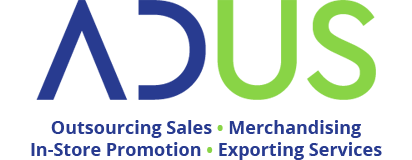Outsourcing your Sales and Play An Active Role In The Partnership
Once you select an outsourced sales provider and complete the onboarding process, you can’t assume that the ship will drive itself.
That’s a recipe for failure. Success comes from a fully engaged and vested partnership.
Thursday, May 9, 2019

Devote your time and energy to build better business relationships with your new sales partner(s). Continued communication as the partnership advances benefits both parties.
Just as you constantly interact with and guide your internal team, you need to be an active participant in your newly formed sales partnership.
How to maximize engagement with your new partner:
- Understand their selling process—from generating leads to closing deals.
- Train the extension of your sales team as you would internal hires. Make sure they are educated on your business’s strategies, processes, goals, and KPIs.
- Provide the team with relevant and available sales enablement materials, so they don’t waste valuable time searching for or recreating content.
- Meet with your outsourced team on a regular basis, and challenge them and their activities, objectives, and results. Participate in weekly touch-base meetings to stay connected on performance, gaps, and key initiatives.
- Loop your outsourced sales team management into internal meetings that cover forecasting, business strategy, and key sales/marketing objectives.
- When you set goals, hold the outsourced team to them. Evaluate the reality of those goals often. Work closely with your outsourced team to drive alignment on what success looks like. Don’t do this only once a quarter.
While it’s true that you’ll save a lot of onboarding time by plugging in an as-a-service sales team, the process isn’t turnkey. In general, it will take a new team around 90 days to learn your value proposition, hone their pitch, create sales sequences, build a pipeline, and begin to deliver results.
How to onboard your outsourced sales team smoothly:
- Use a variable compensation model that includes some level of fixed compensation, as well as a way to reward success. This gives sales reps stake in the relationship and incentive to deliver results.
- Thoroughly train reps up front on your products and brand and encourage your provider to use the information to actively coach reps.
- Establish an open channel of communication so your outsourced sales team feels comfortable contacting you when needed.
It is imperative that you have constant alignment with your extended sales team. Also, it’s important to connect them and insert them into your marketing processes. If you didn’t previously have an in-house sales function before adding an outsourced sales arm, your new team can easily become disconnected from your company’s marketing strategy.
Sales and marketing must work together to achieve the same goals. They can help each other reach their individual performance metrics more quickly.
How to align your internal/external sales and marketing teams:
- Invite key members of your marketing team to regularly interact with your outsourced sales team. Insights from the frontline salespeople who have more customer interactions than most will become a valuable asset to your organization.
- Work together to develop buyer personas to ensure that both teams are targeting the same audience. If your marketing team has already developed buyer personas, have them present the data to sales in order to ensure consistent understanding.
- Encourage your sales team to regularly report their findings to marketing. For example, sales can inform marketing on what makes a lead higher quality and why. Marketing can in turn use this information to improve their lead generation/qualification process.
